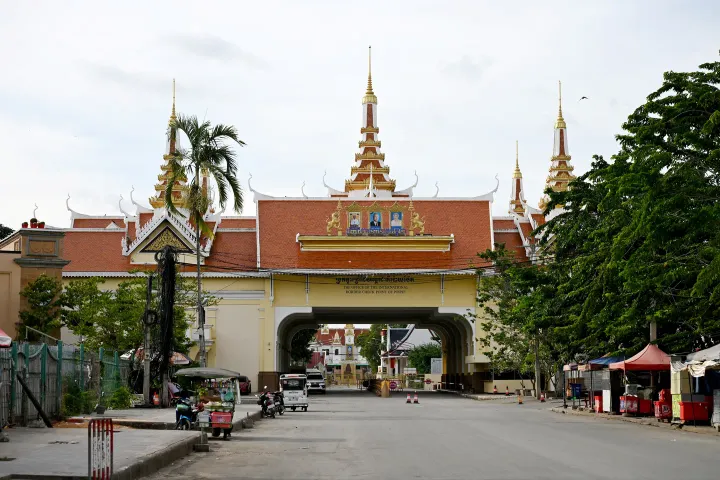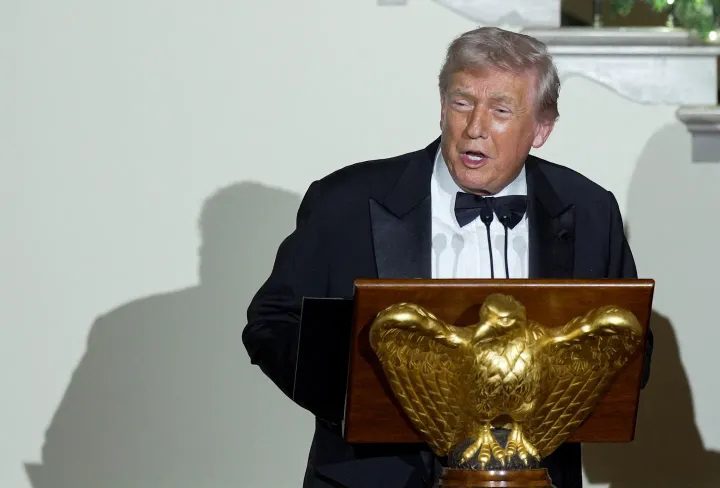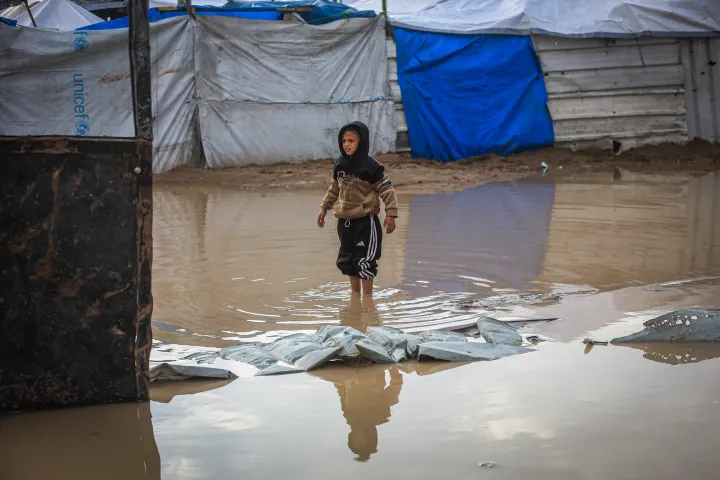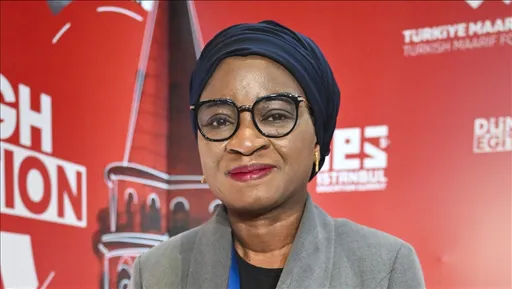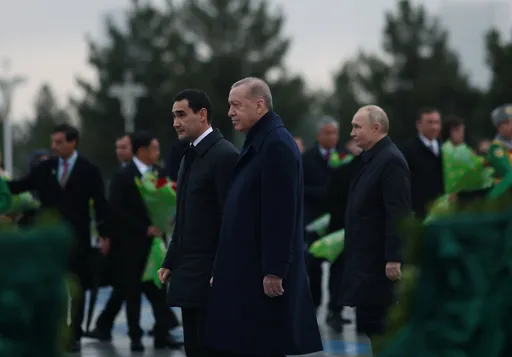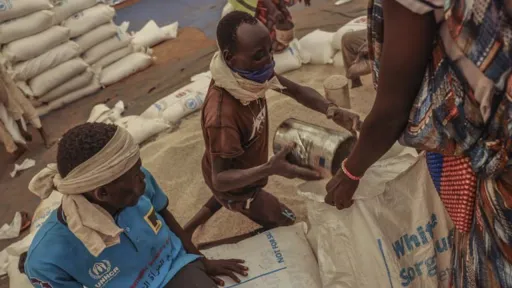By Charles Mgbolu
Oscar Korbla Mawuli Awuku, a 23-year-old art undergraduate at the Takoradi University in Ghana's Western Region, has been painting enchanting body art on models for five years.
It's a demanding labour of creative expression steeped as much in the stillness of his live canvas as the dexterity of his craft.
In less than an hour, the model's body is covered in patterns so detailed and riveting that one is left transfixed as the eyes trail lines melding into a story of shapes, motion and illusion.
"The models must stay very still — if possible, hold their breath. It is about fine detailing, and I can't afford to make a mistake," Oscar tells TRT Afrika.
In the 18th, 19th and even 20th centuries, body painting was the equivalent of sartorial expression for warriors, a symbol of manhood and power that combined beauty and cultural identity.
Oscar started researching Africa's body painting heritage in 2018 after a phone call from a music video director who needed an artist to create body paintings on models playing royalty and guards in a music video by Ghanaian songstress Becca, featuring Sakode.
“The video director, Abass, wanted me to transform the characters and give them a strong African royal demeanour with body paint. That's when I started researching this ancient ritual," he explains.
"I was fascinated by it and equally saddened that it's a disappearing trend. After the shoot, I decided to dedicate the entirety of my art to preserving it."
History is testimony to the fact that body painting was heavily practised in Africa. Some examples are the Khosa-speaking tribes of the eastern regions of South Africa, who had faces completely covered in white paste (for hunting and religious worship), and the fair maidens of Igbo land in Nigeria's east, who had their bodies marked in black patterns with an indigo dye called uli obtained from several species of plants (for beauty and aesthetics).
Another example is the Berber ethnic cluster scattered across Northern Africa, Algeria, Morocco and Libya (for bridal make-up with henna on hands and feet).
"Body painting meant different things to different cultures," says Elijah Sofo, an art lecturer at the department of industrial painting in Takoradi Technical University. "Historically, in Ghana for example, body paint was an artistic expression used culturally to mark young girls passing through puberty and entering womanhood. We call it dipo rites. The patterns and prints were a way of embellishing their bodies, and to protect them from evil. It was both artistic and metaphysical."
But like many African features, the art form struggles to find relevance in the face of modernisation. In eastern Nigeria, for instance, it's now almost impossible to see a young girl branded with "uli" casually walking the streets.
"This is the predicament of cultures in the global south," says Elijah. "The internet and other means of cultural imperialism have further divorced us from our roots and our identity. It is hurting us. When cultures become hybrid, that's not bad. But what's really bad is when these cultural practices are completely lost."
In modern pop culture, tattoos are the fad. Amid the threat of the old being obliterated, Oscar hopes to not only preserve body art but also use it to encourage conversations around topics that affect young people.
"Most of my art themes are on brotherhood, liberation and support and the need for Africans to be their brother’s keeper.''
According to Oscar, young Africans are going through a lot. "The economy in many countries is tough, and depression and suicide occur frequently. I want my paintings to speak and bring hope."
Several of Oscar's artworks are on display at the Melrose Gallery in South Africa, hanging side by side with the creations of some of the brightest minds on the African arts landscape, including Esther Mahlangu, Professor Pitika Ntuli, Mam Noria Mabasa and Willie Bester.
Melrose's website speaks of the significance of making it to the gallery, which it says "represents established and emerging artists whose voices speak to issues of significance to the continent of Africa on a global basis".
"It was very emotional for me when the gallery contacted me. I still can't believe it," says Oscar, conscious of what it means to feature alongside Africa's best.
Besides conventional painting and body art, Oscar has worked on projects that demand innovative artistic interpretation such as music videos, including for Nigerian star Davido.
But as colourful as his artistic journey has been, Oscar laments that he and his models still have to overcome immense challenges.
"It's a pity that some young people struggle to understand my art and resort to cyber bullying. Many of the models are targeted and mocked for exposing themselves. Quite a few have called me, weeping and begging me to take down the pictures because of the criticism they have faced."
"Body painting meant different things to different cultures."
Oscar is determined to continue speaking in the only language he knows despite the pitfalls. "I want Africans to look more admiringly at themselves, and to be more appreciative of who they are as Africans," he says.
The young artist is in talks with a gallery in South Africa to feature a solo show on black identity. Like the journey of the lines he weaves on his models' bodies with paint, you can tell the magic of Oscar's odyssey of artistic expression has only just begun.

